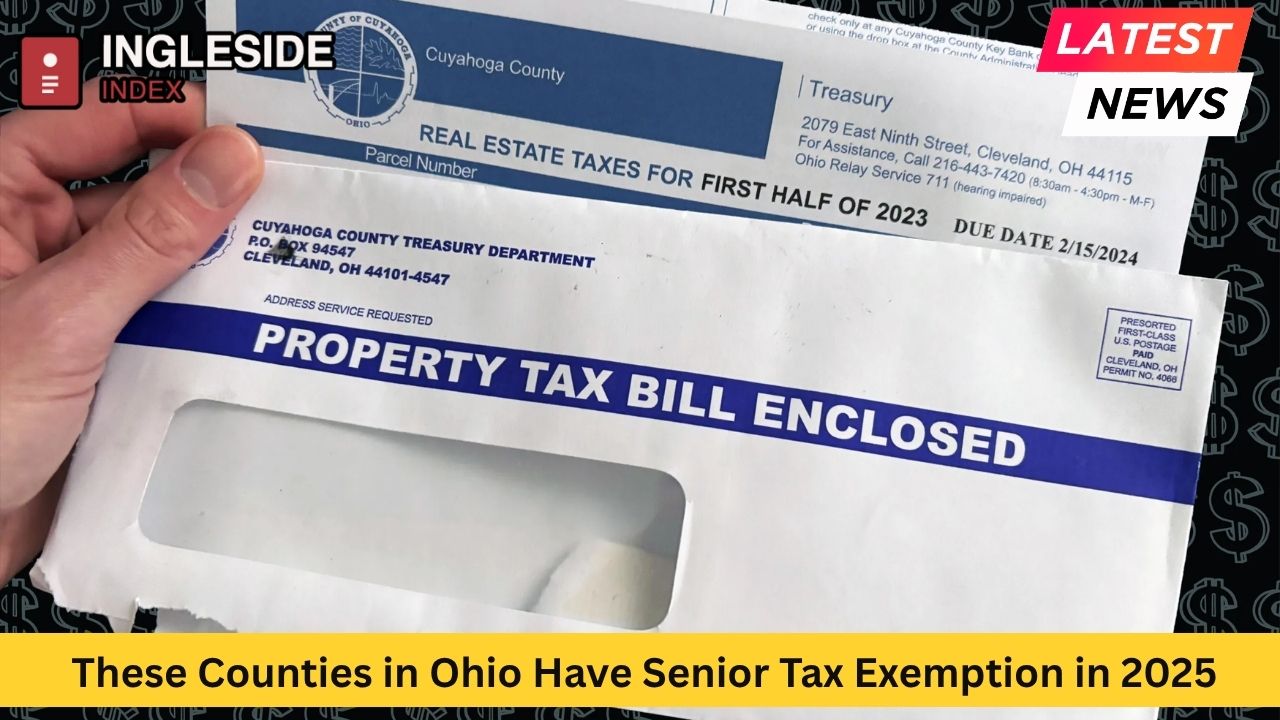Understanding senior tax exemptions in Ohio is an essential part of financial planning for retirement. With property values on the rise and many seniors living on fixed incomes, these exemptions are invaluable in helping older adults stay in their homes and communities. This comprehensive guide unpacks how the senior tax exemption works in Ohio for 2025, lists the counties and cities where it’s available, explains the application process, and provides crucial facts and statistics that every resident should know.
Overview of Ohio’s Senior Tax Exemption
The primary vehicle for property tax relief for seniors in Ohio is the Homestead Exemption program. This statewide initiative offers eligible homeowners a deduction from the taxable value of their primary residence. In 2025, significant updates make the exemption more accessible, adjusting income thresholds and the exempted amount to keep pace with inflation and the economic needs of seniors.
How the Homestead Exemption Program Works
The Homestead Exemption is designed for Ohio residents who are at least 65 years old, completely and permanently disabled, or are the surviving spouse (aged 59 or older at the time of the spouse’s death) of someone who previously qualified for the exemption.
For 2025, the exemption allows eligible homeowners to reduce the taxable value of their primary home by $28,000. This property tax reduction generally translates into significant annual savings, helping to lessen the financial burdens faced by many seniors.
Additionally, an enhanced exemption exists for disabled veterans and certain surviving spouses, allowing them to shield up to $56,000 of the home’s value from taxation.
Who Qualifies for the Senior Tax Exemption in 2025?
Eligibility for the senior homestead exemption depends on three main factors:
-
Age: The applicant must be 65 years or older by December 31 of the application year.
-
Home ownership and residency: The applicant must own and occupy the property as their principal place of residence as of January 1.
-
Income: In 2025, the total Ohio adjusted gross income limit to qualify is $40,000 for most applicants. This threshold is periodically adjusted to account for economic changes.
Disabled veterans and the surviving spouses of first responders killed in the line of duty are exempt from these income requirements.
Common Questions About Senior Exemption
Is the exemption available everywhere in Ohio?
Yes. The core homestead exemption is a statewide program, and all 88 counties in Ohio — from large urban centers to rural communities — administer the program according to the same baseline rules. However, some cities or counties may have additional local tax benefit programs for seniors.
Notable Counties and Cities Where the Exemption Applies
Seniors seeking tax relief can take advantage of this program in urban, suburban, and rural counties across Ohio. Let’s examine the implementation in some of the state’s most populous and diverse regions:
Cuyahoga County
Home to Cleveland and several suburbs, Cuyahoga County is a model for how Ohio’s homestead exemption can offer critical relief. Seniors in cities such as Cleveland, Lakewood, Parma, and Shaker Heights can all benefit from the exemption as long as they meet the criteria.
Franklin County
This central Ohio county, encompassing Columbus, Worthington, and Grove City, offers the exemption to qualifying seniors. Given that Columbus is the state capital and largest city, the reach of the Homestead Exemption program here is substantial.
Hamilton County
Encompassing Cincinnati and its adjacent communities such as Norwood and Blue Ash, Hamilton County also extends the program to eligible seniors and disabled homeowners.
Summit County
With Akron at its heart, Summit County administers the exemption in Akron as well as nearby communities like Cuyahoga Falls and Barberton, ensuring access for urban and suburban residents.
Montgomery County
Dayton and its surrounding suburbs, including Kettering and Huber Heights, are all covered, offering thousands of homeowners an opportunity for tax relief.
Lucas County
In cities such as Toledo, Maumee, and Oregon, seniors benefit from the Homestead Exemption.
Stark County
The program is active in Canton, Massillon, and Alliance, touching communities large and small.
Other Participating Counties
-
Lorain County (Lorain, Elyria)
-
Butler County (Hamilton, Fairfield, Oxford)
-
Lake County (Mentor, Painesville)
-
Mahoning County (Youngstown, Boardman)
-
Wood County (Bowling Green, Perrysburg)
-
Logan County (Bellefontaine, Russells Point)
-
Marion County (Marion, Caledonia)
-
Washington County (Marietta, Belpre)
Due to the statewide nature of the program, every county — whether rural, metropolitan, or somewhere in between — offers the Homestead Exemption to eligible residents. From Clermont County in southwest Ohio to Ashtabula County along Lake Erie, all 88 Ohio counties participate.
Facts and Statistics About Ohio’s Senior Tax Exemption
-
Around 800,000 Ohioans benefit from the senior Homestead Exemption.
-
The typical property tax reduction per qualifying household is between $400 and $500 annually, though savings vary based on location and property value.
-
In 2025, the exemption limit rises to $28,000, up from $26,200 in 2024, reflecting an increased effort to keep property taxes manageable for seniors.
-
Enhanced exemptions for disabled veterans and specific surviving spouses reach $56,000.
-
Each year, the Ohio Department of Taxation adjusts the income threshold and exempted values for inflation, making the program more responsive to economic realities.
Special Local Senior Tax Credits
Beyond the statewide exemption, a few Ohio municipalities offer senior-specific tax credits on local taxes. For example, the city of Clayton offers a Senior Property Tax Credit of $25 per semiannual installment for residents aged 65 and over, provided they meet residence and eligibility rules. While less substantial than the homestead exemption, these local credits serve as valuable supplements.
How to Apply for the Senior Tax Exemption in Ohio
Application is made at the county level, typically through the local county auditor’s office. The process generally involves:
-
Downloading and completing the Homestead Exemption Application (form DTE 105A for most seniors, DTE 105I for disabled veterans).
-
Submitting proof of age or disability.
-
Providing documentation of annual income (Ohio adjusted gross income).
-
Verifying home ownership and primary residency status as of January 1.
-
Filing before the December 31 application deadline for the tax year in question.
Seniors already enrolled in the program do not need to reapply unless their status changes or they move.
Impact of Senior Tax Exemption on Ohio Communities
Senior tax exemptions offer more than just individual savings — they help maintain neighborhood stability, support aging in place, and mitigate the risk of displacement due to rising property taxes. In counties with higher populations of older adults, such as Summit and Lucas counties, property tax relief has a measurable influence on keeping residency rates high among seniors.
In fast-growing areas like Franklin and Delaware counties, the exemption helps offset the sharp increases in assessed property values, ensuring that older residents are less likely to be priced out of their homes as development continues.
Proposed Changes and Legislative Updates for 2025
Recent legislative proposals seek to expand the scope of Ohio’s property tax relief for seniors. A bill in the Ohio Senate in 2025 aims to provide a 50% property tax reduction for any homeowner aged 65 or older, regardless of income. This proposal, if enacted, would be layered on top of the current homestead exemption, delivering even more significant relief to aging Ohioans.
Lawmakers continue to evaluate further increases to income and exemption limits, recognizing the vital role these measures play in the economic security of seniors across the state.
Challenges and Realities for Seniors
Many seniors in Ohio are on fixed incomes, with thousands relying solely on Social Security or modest retirement savings. As property taxes climb, the strain on household budgets becomes more acute. Programs like the Homestead Exemption are becoming increasingly important, especially in counties with sizable elderly populations such as Mahoning, Trumbull, and Lorain counties.
There are ongoing calls to further simplify and expand eligibility so that all seniors, including those in rapidly appreciating regions like Cuyahoga County and Franklin County, can access full relief regardless of income. Some advocates also urge making these benefits transferable even if a senior must move within Ohio.
A Look at the Application Process Across Sample Counties
Franklin County (Columbus)
Residents apply directly through the Franklin County Auditor’s office, where staff provide assistance and guidance. The program applies to the entirety of Franklin County, including cities like Bexley and Hilliard.
Summit County (Akron)
Summit County offers extensive support for seniors. Application forms are available online and in-person at the fiscal office. The county actively promotes the exemption in cities such as Stow and Fairlawn.
Montgomery County (Dayton)
With a large number of retirees and older adults, Montgomery County’s auditor’s office works closely with local community groups in Trotwood, Miamisburg, and Kettering to publicize the benefit.
Cuyahoga County (Cleveland)
Cleveland residents and those in cities like Bay Village and Bedford can access the application via the Cuyahoga County Fiscal Officer’s office, with outreach programs designed to help seniors navigate the paperwork.
Lucas County (Toledo)
Urban and suburban seniors alike benefit from proactive communication campaigns led by the county auditor to ensure that the Homestead Exemption is widely understood.
Additional Resources for Seniors
Every county auditor’s website offers details, downloadable forms, contact numbers, and even online chat support in some cases. Local senior centers, libraries, and social service agencies also provide hands-on assistance, often hosting tax clinics during the application period.
Conclusion: Why These Senior Tax Exemptions Matter
The Homestead Exemption and related senior tax relief programs are among Ohio’s most important tools for supporting the well-being, independence, and dignity of older adults. As the population ages and the cost of living rises, eliminating unnecessary property tax burdens helps thousands of residents remain in the homes and neighborhoods they love.
For retirees, disabled veterans, and surviving spouses in cities from Cincinnati to Youngstown and counties from Athens to Wood, this program can mean the difference between financial hardship and housing stability. With the 2025 increases in eligibility and benefits, even more Ohio seniors stand to benefit, making it a cornerstone of the state’s approach to senior well-being.
Those interested in applying for or learning more about the senior tax exemption should start with their local county auditor’s office, check online resources, and seek support from Ohio’s robust network of senior advocates. With these exemptions and the potential for future expansions, Ohio is taking meaningful steps toward ensuring that every older resident can age with grace and security in their own home.













Leave a Reply